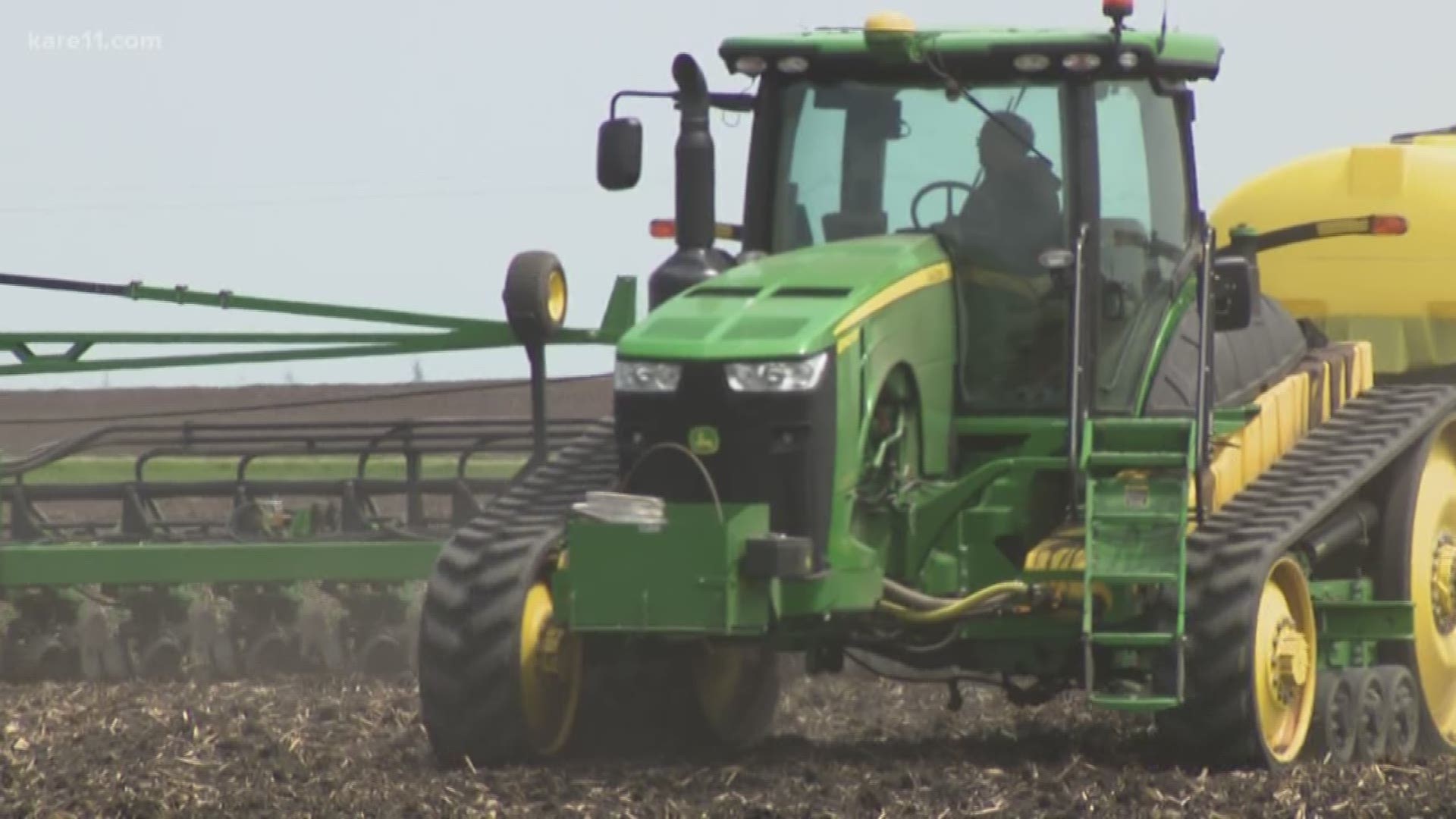BUFFALO LAKE, Minn. — Spring should be a time of promise, but it's getting tougher by the day to be optimistic from the seat of Paul Bleck’s tractor.
“We're for sure a good two weeks behind schedule on the corn,” Bleck said.
Looking back is difficult – looking forward, even worse.
“It's the forecast,” crop consultant Curt Burns said. “It's the four to five inches of rain that's coming. We won't get back in these fields until the first week of June - if we have good drying weather.”
Burns, owner of C.B. Agronomics, farms near Stewart.
He caught a break in the rains and was able to get his crop planted.
Yesterday, the first of his corn plants poked through the soil.
During a normal year?
“It would probably be about that high right now,” Burns said, holding his outstretched hand about 10 inches off the ground.
Burns said the “sweet spot” for planting corn in Minnesota is generally between April 20th and May 10th.
With each passing wet day, yields can be negatively impacting – while the odds increase that some fields may simply go unplanted.
“To get corn in the ground right now with the type of rainfall that’s predicted is pretty unlikely that we’re going to get all these acres planted with corn,” Burns said.
Soybeans can be planted later, but farmers would be taking another risk in switching crops.
Soybean prices have been hit hard by the trade war with China. The Asian nation used to buy a quarter of the U.S crop.
“Soybeans are $2.00 a bushel below where you could even think about making money right now,” Burns said. “That's how bad the soybean price is.”
Last year the Trump administration subsidized soybean farmers by $1.65 per bushel to offset their losses, but the 2019 subsidy – if one is forthcoming – hasn’t been set.
Corn prices are less impacted by Chinese tariffs but have also remained in a years-long slump.
Bleck, who farms both corn and soybeans, is doing his best to remain optimistic.
“I always look at it, all it can do is get better now, because it's on the bottom,” Bleck said.

